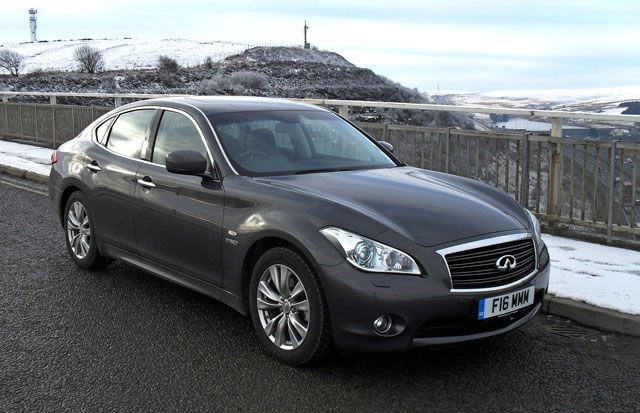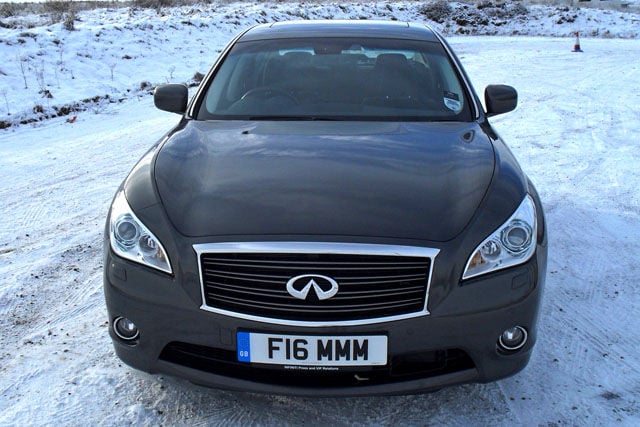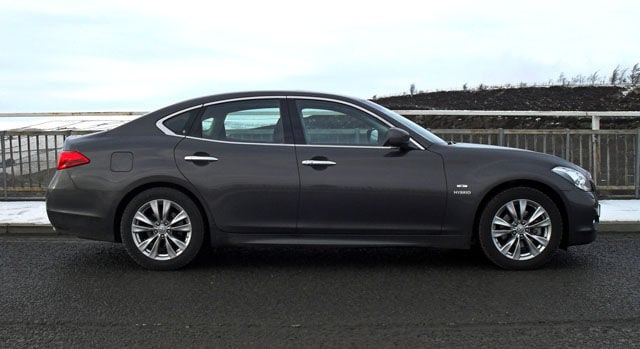This article is more than 1 year old
Review: Infiniti M35h hybrid sports saloon
To infinity and... er... Skelmersdale
If you’ve got a little over 40 grand lying about and fancy a four-door hybrid sports saloon then Infiniti - the posh bit of Nissan in a relationship similar to that between Lexus and Toyota - would have you know that the latest M35h is not only the fastest, but also the cheapest car of its type.
Tempting words. After all who wouldn't want a car that can hit 62mph in 5.5 seconds but returns 41mpg over the combined cycle and all for five grand less than the competing product from BMW?

More curves than Gina Lollobrigida
Given that we are talking about here is a large Japanese saloon, at this point it would be usual to have a good old laugh at the exterior styling, but I’m not sure we should. Granted it’s not what I’d call a pretty car, but neither are the current same-sized offerings from BMW, Audi, Mercedes or Lexus.
In terms of visual appeal, Jaguar’s XF puts them all in the shade, but you can’t have a hybrid XF so there’s no real point in making that comparison.
All those curves and lumps must help cleave the air, though. With a coefficient of drag of 0.26, the M35h is the slipperiest member of the M series family and compares well with the 0.25 score of the Toyota Prius.
Under the M35h’s bonnet sits a double overhead camshaft 3.5-litre 24-valve V6 generating 302bhp and 258lb-ft of torque, and an electric motor good for 67bhp (50kW) and 199lb-ft of torque. Combined output of the V6 and electric motor is 268kW, or 359bhp in old money.

The big chrome framed grille is not to everyone's tastes
As is the case with Toyota and Lexus’ hybrids, the petrol engine uses Atkinson-cycle valve timing to trade some loss in power for improved efficiency.
The battery pack, which is tucked away behind the rear seats, is a laminated cell lithium-ion affair with a 1.4kWh capacity and which borrows its basic design from the Nissan Leaf e-car. Technical details aside, the battery pack eats up a whopping 30 per cent of the boot space available in the non-hybrid, 3.7-litre M37 and robs you of the ski slot.
No matter what’s propelling you along the road, the engine, the electric motor or both, the energy is directed to the rear wheels through a seven-speed automatic transmission with a manual override for the more interventionist.
Infiniti’s hybrid system, called Infiniti Direct Response Hybrid (IDRH), uses a single disc-shaped electric motor/generator, two clutches and what is in effect an automatic transmission with the torque converter removed. It’s called a parallel two-clutch, or P2, system and the idea is to offer the best blend of power and efficiency.

Looks good from the side
The first of the two clutches is a dry clutch positioned between the engine and the electric motor. The second is a wet clutch at the rear of the transmission that allows the engine to turn the motor/generator to charge the batteries when the the vehicle is stationary.
